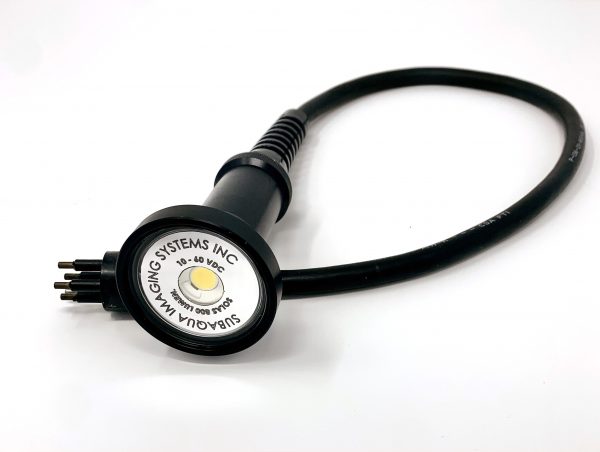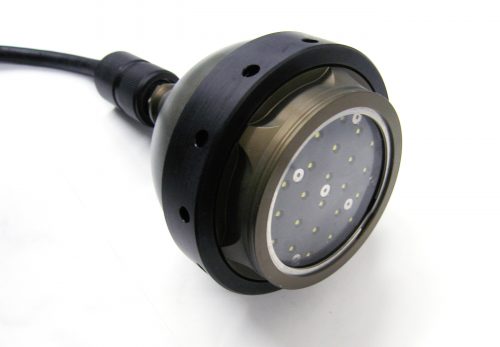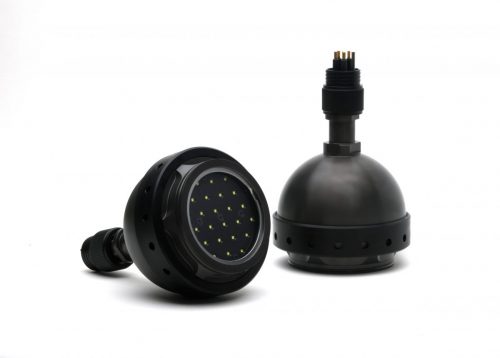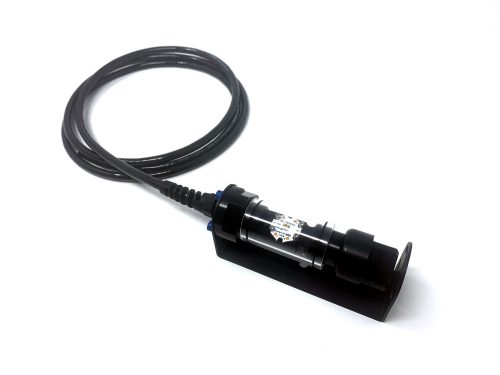Product Description
The SAIS small LED light is designed to be a rugged, compact, 0 – 100% dimmable light with a wide input voltage range that can be easily integrated into any system used in the marine environment for a wide range of tasks. Adding the SAIS Ethernet Interface and PoE Adapter on the interface end of the cable makes the light perfect for IoT and Machine Vision applications. • Wide voltage input range of 9 to 48VDC. • High efficiency LED produces crisp consistent daylight color light using a fraction of the energy consumed by conventional light sources making it ideal for battery operation. • The two different versions of the light can produce between 1000 to 2600 lumens of bright, white light. • 100 degrees of even illumination with no bright spots for wide-angle cameras. • SAIS LED lights are 100% dimmable via analog or over Ethernet connection. • By adding the SAIS Ethernet interface and PoE Adapter to your system, the lights can be fully integrated into an Ethernet connected remote imaging system. Control can be achieved by human interface using a standard web browser or completely autonomously via HTTP commands. • Can be powered directly from PoE source using the SAIS Ethernet interface and PoE Adapter (sold separately).
Additional Information
| Weight | 1 lbs |
|---|---|
| Dimensions | 2.3 x 3.5 x 6.9 in |
There are several options available for each camera and light. The bodies of the cameras can be made from plastic or metal and the cables and connectors or all devices have several options which should be considered when purchasing.
- Standard cable or heavy duty cable
- Permanently attached cable with a cable gland only or with a fail-safe bulkhead
- Dry-Mate Connector
- Wet-Mate Connector
For your application you can decide on the options that will most suit by considering the following:
Cable – Standard or Heavy-Duty?
- The cable can be either standard or heavy duty. For most applications, the standard cable is good. If you expect more extreme conditions (open water, surge, waves, chaffing, etc) or would like WET-PLUGGABLE connectors, the heavy duty cable is recommended.
Connectors – Permanent or removable?
- The cable can be permanently attached to the camera directly or with a bulkhead. This saves cost and reduces the number of potential failure points for situations where the camera will be installed for long periods of time without being moved.
- The permanently attached cable with a cable-gland only, is the lowest cost option but should only be used in tranquil environments like aquariums or ponds where the water is not moving and the camera will rarely, if ever be moved.
- The permanently attached cable with a fail-safe bulkhead adds an extra layer of protection. The bulkheads provide protection if there is a break in the cable which the cable gland only does not. If the cable jacket is torn or broken, the cable gland will not prevent water leaking along the cable to enter into the camera housing over time. The bulkhead models prevent this by providing a water barrier at the cable camera connection.
- Alternatively, the cable can be detachable by using one of the underwater connector options.
- If you will need to detach the cable from the camera and are using the standard cable, then the DRY-MATE connector is the option. As the name implies, the cable can only be attached or detached from the camera at the surface when everything is dry.
- For heavy duty cable, you need the WET-MATE connector. This option allows the camera to cable connection to be detached and reattached even when submersed in water.
Body materials – Plastic or Metal?
- Plastic housings are great for applications where the camera is going to be permanently installed in the marine environment or other highly corrosive liquids at a depth of 60m (200ft) or less. At SAIS, we have designed most of our cameras to have a “No exposed Metal” option, meaning that no part of the camera in contact with water is made from metal. This greatly reduces the likelihood of the camera being damaged by the environment.
- For deeper applications, we offer our cameras in an anodized aluminum body. To get the best corrosion protection, sacrificial zinc anodes will be needed for aluminum placed in saltwater. All our aluminum cameras are provided with a mounting holes for sacrificial anodes.
- For superior corrosion protection and deep ocean applications, we offer versions of all cameras in Stainless steel and titanium versions.





